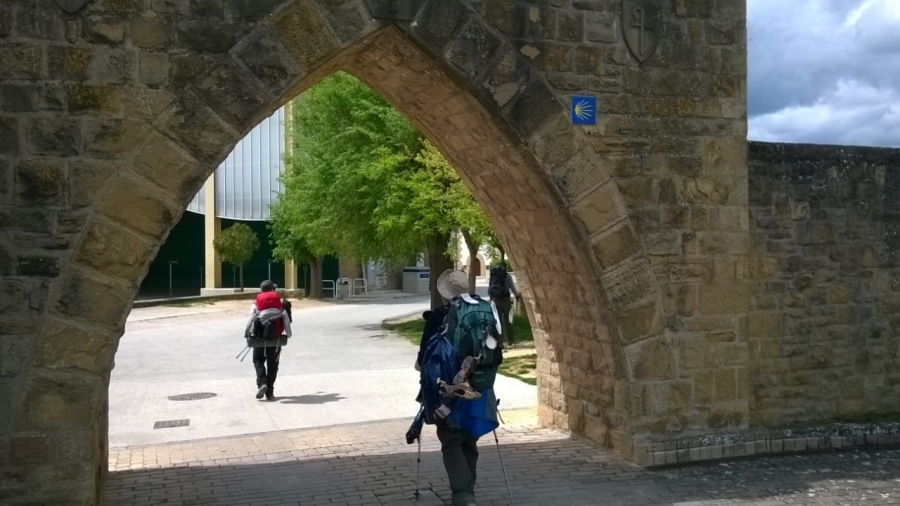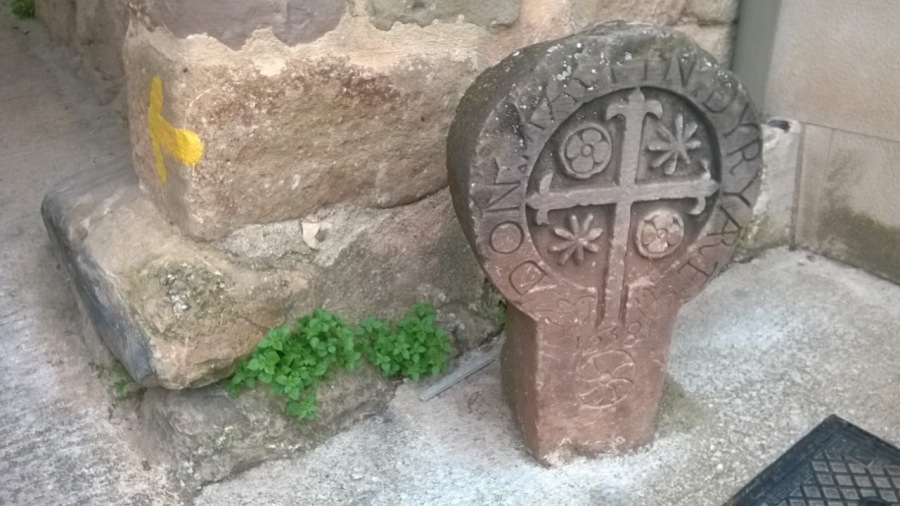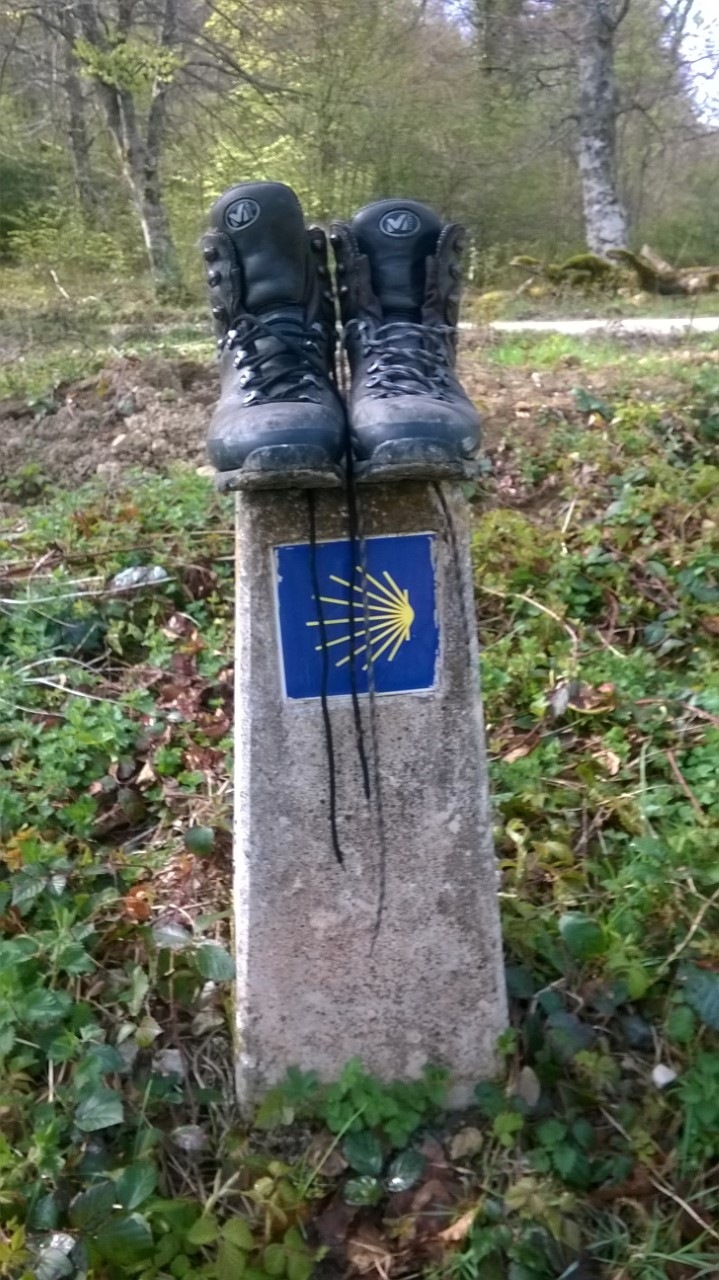Walking the Camino de Santiago
This long distance footpath loosely follows the route said to be taken by Saint James, early Christian pilgrims and Crusaders across Northern Spain to Santiago de Compostela and thence to Finisterre. There are several different Caminos allowing walkers and cyclists a diverse choice of starting points and navigational difficulty. Some options such as the Camino Del Norte which starts in Irun on the Biscay coast and wends its way to Santiago via Gijon and the Camino Portugues which takes a route north from Lisbon and Oporto are quieter and less travelled even in the height of summer.
The Daddy of them all however is the Camino Frances or French Camino. This starts in the small Pyrenean town of St. Jean Pied-de-Port in France and crosses the Spanish border dropping into the village of Roncesvalles before leading the pilgrim westwards across Northern Spain through Navarra, La Rioja, Castilla y Leon and ultimately to the Parador Santiago in the Galician town of Santiago de Compostela.

This is the easiest to navigate with the best signposting. There are villages and towns every few kilometres and hostels in virtually every village. It gets the most visitors with over two hundred thousand pilgrims walking at least some stages of it each year and is plentifully supplied with watering holes and cafes. With this in mind it really runs the risk of being a bit of a nightmare for anyone seeking a period of quiet contemplation. Fortunately, for the most part, the landscape seems able to swallow the numbers without it feeling like a crowd leaving a sports stadium. The people get spread out over such a large area and there are sufficient alternative routes that it really only feels congested during the height of summer in July and August. In these holiday months it can feel as if every second person on Earth is sharing the trail. This is especially true of the last hundred kilometres or so as the path crosses the final Galician section.
For much of the English speaking world the guide books of choice are those by John Brierley. He has written guides for the French, Northern, Portuguese and Finisterre routes. These are enjoyable partly because they are not a paperback satnav. There are directions yes, and enough of them but at no point is the reader led mechanically through the landscape as if incapable of finding things out for herself. Instead the walker is introduced to a bit of the history of the landscape and route as well as options for avoiding some of the less interesting sections. For each day he offers what he calls “The mystical path”. A thought for the day which serves to remind us that this walk can represent more than just a stomp through as many miles as possible before sundown. Other informative guidebooks offering an alternative mindset are published by Cicerone press and are also a very useful read.
This route is no ordinary long distance footpath. Its genesis was as a journey of pilgrimage. The Camino has been a Christian pilgrimage for centuries but its roots as a worshipful journey go long back into pre-Christian times. Brierley’s Mystical path is a reminder to lift our heads up and consider the nature of the place, its history and the nature of our journey through both.

Pyrenean beginnings.
The journey starts in St. Jean Pied-de-Port. This is a pleasant, busy village with the feel of a bigger place. It sees a large number of pilgrims setting off every year and is a handy place to pick up a Credencial if you didn’t already get one from a local Society of Saint James. From here the path leads out over the Pyrenean border towards Pamplona and points west. In Pamplona as in the other larger towns the way through is marked but after days out in the countryside it is easy to miss the signs amidst the hustle and bustle of the city. Always take a bit of care with your urban navigation before setting off.

Apart from the big towns and cathedrals there are several small places along the way which are beautiful and are well worth a bit more than a traveller’s cursory glance. The centre of the little town of Santa Domingo de la Calzada is a lovely collection of ecclesiastical buildings, narrow streets and a large square in which to sip a drink and watch the world go by on a sunny evening. Cirauqui is an old roman fort in the Basque country with beautiful buildings and superb views of the surrounding plains. For someone like me, with a childhood filled with cowboys and Indians the scenery of the mesetas outside Burgos brought back memories of watching Saturday afternoon westerns on a black and white TV.
One thing that sets the Camino apart from some other, well known long distance trails is that the walker is travelling through a living landscape. The paths connect with villages and towns; pass through industrial estates, over mountains and cross farmland. These are not wilderness areas. This is a populated landscape where people live and work and although the tourism of the Camino is a part of the region’s story it is by no means the only part. Tourism here doesn’t dominate in the same way that it does on the sun resorts of the coasts. This adds to the diversity of experiences to be found along the way. It is possible to visit vineyards and wineries, bustling city centres, ancient remains, monasteries and the quietest of villages.

Food and accommodation.
The choice of places to stay is both varied and affordable. Most pilgrims spend their nights in hostels of some kind or other. Municipal or ecclesiastical ones tend toward the basic end of the spectrum whilst some of the private ones offer very comfortable lodgings indeed. Prices range from cheap to ridiculously cheap. I’m going to give a special mention to a hostel in Villatuerta called La Casa Magica. The hostel is fine; clean, comfy and friendly but the food is absolutely excellent. A combination of tasty, plentiful and well priced that would be hard to beat anywhere. If the hostel food is unappealing then most villages have bars and restaurants which offer Peregrino menus. These are usually three courses with wine or mineral water for anything between nine and fifteen Euro.
If hostel life lacks appeal then the region is well supplied with hotels and guest houses. Prices are hardly scary and standards generally are pretty high. I found that the tourist office staff were extremely helpful and three star hotels cost from about forty Euro rising to seventy or more in Santiago de Compostela city centre.
Camping is very limited and not at all encouraged along the Camino in most areas. The lack of sites makes carrying a tent a pretty thankless exercise. I met one Korean walker who had brought his tent from home; carried for over three hundred kilometres and had yet to unpack it. I used a bivi bag as I wanted to do long days and just stop where I pleased of an evening but this does require the user to be comfortable sleeping in what is effectively a large Gore-Tex bin liner. In heavy rain they can be quite claustrophobic as they need to be closed up to be waterproof. By stopping late and setting off early the next morning I had no problems or confrontations. My first stop would be for breakfast and a wash in the first village I reached that day. Every three days or so I would book a hostel or hotel and clean up properly, rest well and set off again.

Equipment.
As is often the case the trick here is to not bother carrying too much stuff. Trail walking shoes or lightweight boots are ideal. Solid, heavy duty mountaineering boots are overkill. Light rainwear is fine for most of the year a poncho would be perfect. It is easy to get carried away before leaving home but there is no joy in carrying a load of unnecessary gear across northern Spain. Save your back and take less. My pack weighed in at 4.1Kg in total. I had two sets of lightweight clothes, toiletries, sleeping bag, bivi bag, self-inflating mat and that was it. Carrying so little clothing meant doing more laundry so add a third set if you don’t like hand washing. I wore Columbia Silver ridge trekking pants. These are super light and very fast drying. Similar pants are made by all the big outdoor companies but apart from the Silver Ridge I can personally recommend the Craghoppers Kiwi Prostretch or anything by the German clothing company Maier. These are all high quality, light, easy care and packable.
Footwear fit is critical. Get it wrong and you will spend half your trip thinking about, talking about and fixing up your sore feet. Why travel to Spain just to talk about blisters? Take some time, get advice and get it right. I won’t go into detail here because I have already covered this in some depth in a previous article on this website so check out this link if you want more information:
https://www.charlescamping.ie/store/footwear-fitting
Stop and smell the flowers.
The roots of the Camino are religious. Pre- Christian, Christian and other travellers have traversed this area and in many cases do so in a personal search for meaning or enlightenment. Some have found it but a great many others have returned home having discovered nothing more than the benefits of some healthy physical exercise.
I have met several people on and off the trail who spent much of their journey either in a desperate rush to reach the Parador de Santiago or seeking spiritual validation every step of the way. I would like to suggest that to pass through this landscape with its history, politics and culture without absorbing a little bit of the life of the area would be doing it a disservice. Take the time to chat and explore. I spent an extra day in Santo Domingo just because it appealed. I liked watching the world go by from a cafe table and enjoyed wandering around the older streets. That extra day was like a holiday within a holiday and is still one of the most vivid memories of my trip.
You won’t be here every year so enjoy it and experience it to the fullest extent.
If you enjoy the place, the people you meet and the experience without conditions then perhaps the personal epiphany becomes more likely rather than less.
Buen Camino.

Thanks for reading. If you liked this or any of my other articles then feel free to share and comment.
Further information.
The following organisations provide information, organise tours and can generally help with planning your Camino trip.
https://www.followthecamino.com
